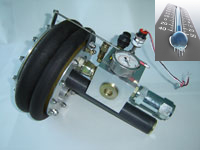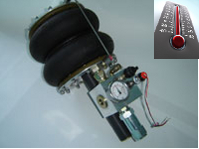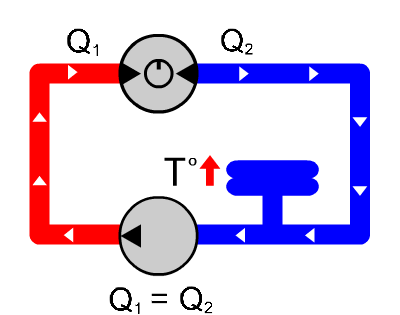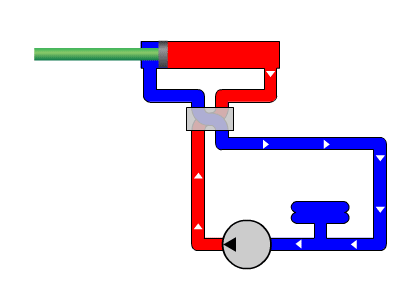Operating principle
The VVR's flexible bellows is key to the concept.
It allows expansion and contraction to take place as fluid thermal temperature changes.



The bellows also reacts to differential volumes caused by cylinder rod motion. Thus the cylinder rod volume only must be taken into account in the reservoir size requirement additionally to the network fluid volume expansion. The VVR is not affected or dependant of pump flow since the network main return line is directly routed to the pump inlet where the VVR installed near the pump will only see differential volume.
The VVR is sealed, airless and slightly pressurized (1 to 9 PSI / 0,1 to 0,6 bar) thus supercharging the pump inlet no matter the operating altitude and machine orientation. One VVR can feed many pumps or one per pump to isolate circuits. Many VVR's can be installed in series or parallel to increase volume.
Operating principle

Motor video and animation
This representation shows the VVR thermal compensation from temperature changes regardless of motor size:flow IN = flow OUT.


